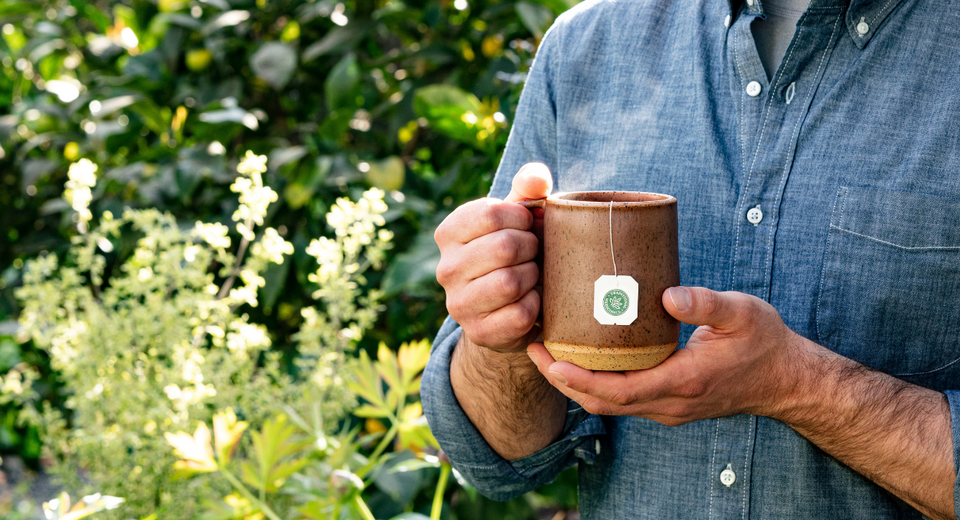
An Herbalist Library: Identifying Wild Medicinals
All plant lovers know that there’s no such thing as a short hike. With every tree, leaf, and flower to admire and identify, the shortest of distances can take hours. While stopping to smell the roses may add more time to our trek, we don’t mind because we see it as meeting a new friend. We usually carry a plant identification book during our walks to help us determine what we’re seeing, or we snap a few photos so we can easily research the plant post-hike. Here are eight of our favorite plant identification books from herbalists and plant lovers alike, whether you need an all-purpose reference or a specific, regional field guide.

Florida’s Edible Wild Plants by Peggy Sias Lantz
This lush state is known for its tropical, sunny climate and heavy rains. Due to its unique ecosystem, Florida boasts a wider diversity of plants than the rest of the country. In Peggy’s book, you’ll find native medicinals like Spanish needle and passionflower, or wild edibles from other sub-tropical or tropical climates that have naturalized. Here’s an opportunity to take your Florida vacation to an entirely new level.
Foraging the Rocky Mountains by Lizbeth Morgan
Never thought you would eat a cactus? Turns out edible and medicinal prickly pears are great in jams, once you get the thorns out! The Rockies stretch from British Columbia all the way down to New Mexico, and are home to a treasure trove of wild medicinal species.

Identifying and Harvesting Edible and Medicinal Plants in Wild (and Not So Wild) Places by Steve Brill and Evelyn Dean
This not-so-basic guide features over 200 wild medicinals with instructions on how to identify, collect, and use the plant. Create a forager’s feast out of found plants using the recipe section for inspiration.
Medicinal Plants of the American Southwest by Charles W. Kane
Few people realize that the deserts of the Southwest are home to a plethora of fascinating plants. Favorite medicines like aloe, sage, cactus and California poppy grow well in these ecosystems. Take a walk through the heat and discover some of nature’s wildest Western remedies.
Medicinal Plants of the Pacific West by Michael Moore
This classic plant identification book was written by the late and great Michael Moore, founder The Southwest School of Botanical Medicine. Known as one of the greatest herbalists in the past century, Moore writes books filled with wisdom and quick-witted humor. This plant guide is the perfect library edition for those living or foraging along the Pacific coastline. If you like this one, be sure to also check out Michael’s Medicinal Plants of the Desert and Canyon West and Medicinal Plants of the Mountain West.

Northeast Foraging by Leda Meredith
If you’re constantly wondering how to cook a cattail (plant!) or wondering if field garlic is as wonderful as it sounds, this book is for you. Be it winter or summer, woodlands or the seashore, you’ll find wild edibles and medicinal treasures with the help of this indispensable guide.
Peterson Field Guide to Medicinal Plants by Steven Foster and James A. Duke
An essential field guide for any hiker’s library! Identify medicinal plants of Eastern and Central North America with this straightforward guide that’s small enough to fit in your daypack. With over 530 plant allies featured, you’re bound to identify a plant on the trail by using the book’s simple organization-by-color system.
Southeast Foraging by Chris Bennett
Cleavers, elderberries, and goldenrod might seem like plants you can only find in the supplement aisle, but we assure you they grow wild right here in the United States. If you’re adventuring in Kentucky, Alabama, Virginia, Georgia, or anywhere else in the Southeast, we recommend keeping this book handy.
While it’s fun to collect wild plants, it’s also important to be cautious, as many wild medicinals are susceptible to over-harvesting. Ethical wild collection requires close attention to detail. Check out this thorough article on Wild Crafting for Beginners for a proper introduction. It is also important to keep up with United Plant Savers and their Species at Risk list if you’re going to harvesting anything during your hikes. When we’re in a real botanical pinch and can’t identify the exact species, we sometimes send photos over to the Plant Identification Group on Facebook. This tribe of 75,000 botany enthusiasts usually responds within five minutes, and at times with the exact species name!
Wanting more books for your plant-inspired library? Here is a list of our herbal staples, and an article on our favorite historical references.
*Please note that many plants look alike and are not edible. With concern for your safety, we ask that you solicit the help of an herbalist or botanist before using a wild plant species as food or herbal medicine.





